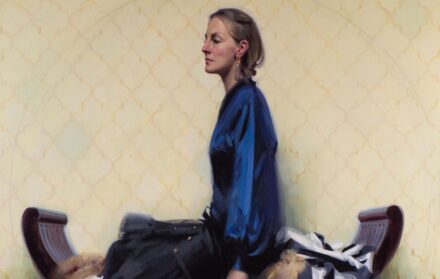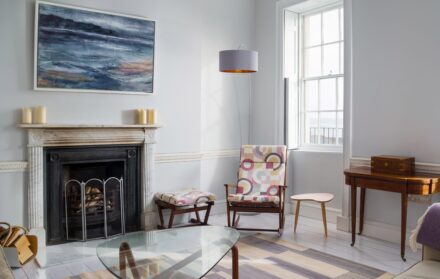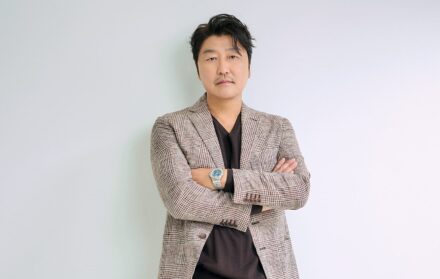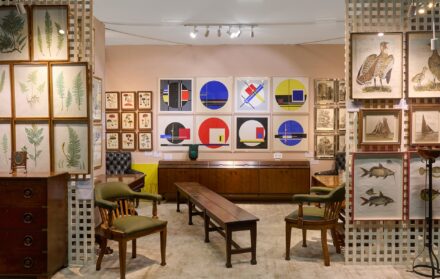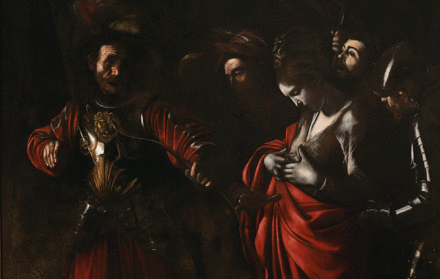
Pride in London: How a small march in Highbury sparked a ground-breaking movement
Now an annual celebration attended by millions, we dive deep into the story of the UK’s first gay rights march
54 years ago, on a chilly November evening in Highbury Fields, passers-by would have seen a congregation of people doing something that, only a decade earlier, could have seen them imprisoned. Openly kissing, waving balloons, chanting, singing and playing instruments, those walking as a part of this small torch-lit parade were taking giant strides indeed – as participants in the very first gay rights march Britain had ever seen.
This year, over a million people are expected to congregate in Trafalgar Square, Victoria Embankment and Soho for the Pride in London event, which will see music, cabaret and speeches take place across six stages in celebration of the capital’s LGBTQ+ community. By comparison, the Highbury Fields march of 1970, where the seeds of the contemporary Pride festival were sown, consisted of what’s estimated by those who were there to be something between 50 and 150 people.
Now commemorated in the form of a plaque erected in the small park that backs onto Highbury & Islington tube station, these pioneers were inspired to take action following the Stonewall riots in New York the previous year. Yet there was also a domestic case that propelled the founders of the Gay Liberation Front (GLF) to take their message from underground newspapers to the public parks of N1.
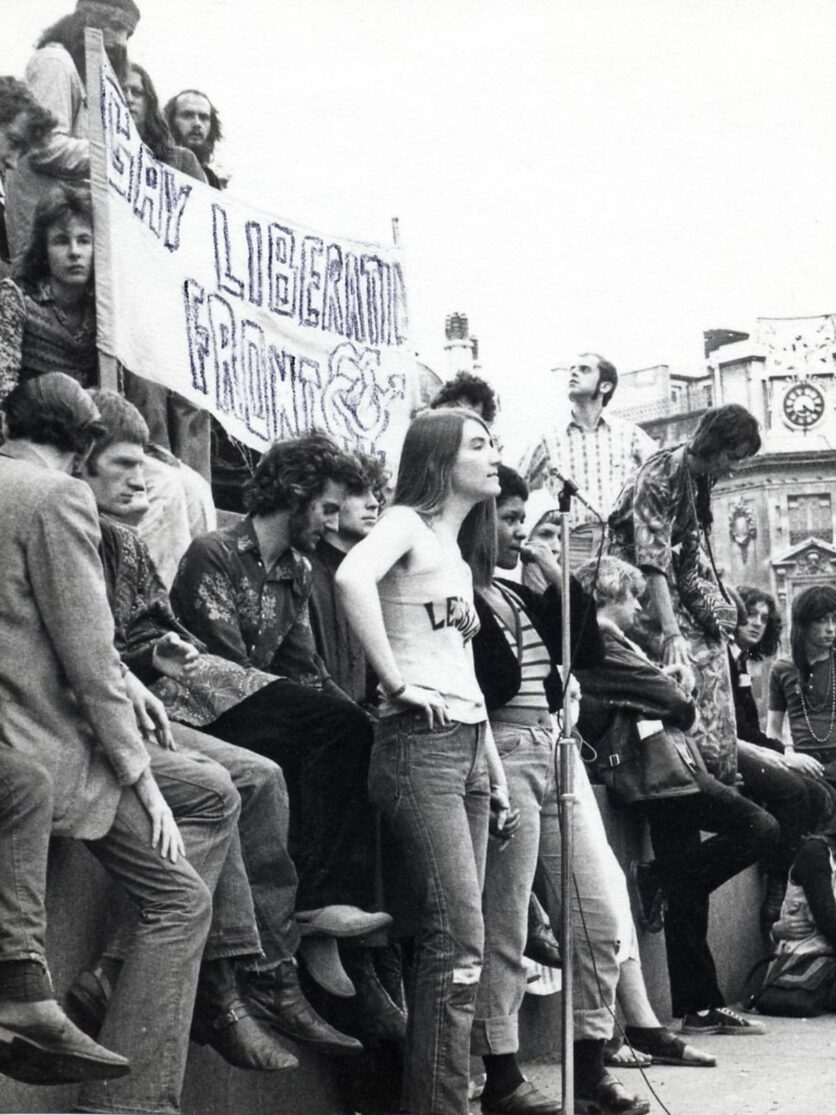
Louis Eaks was a prominent Young Liberal campaigner who had been arrested in the public toilets on Highbury Fields in October 1970 after falling foul of a police entrapment tactic. This was something that was common at the time – despite homosexuality having been decriminalised three years before by Harold Wilson’s Labour government. Police claimed that Eaks had been approaching men entering the toilet in an attempt to solicit sex. Eaks denied this, stating that has was simply asking for a light for his cigarette.
That was enough for the GLF to act. A new organisation that held little truck with what they saw as being the anaemic, ‘don’t rock the boat’ attitude of existing gay rights organisations, the GLF had more radical intentions. As David Fernbach wrote in his book, The Rise and Fall of the GLF: ‘The counterculture was about dropping out, drugs, free sexuality, hippydom, flower power and that was still part of the heady atmosphere that was behind it but I think by 1970 it had become more hard edged and political… All the rhetoric of GLF was about revolution and there was a real confusion between revolutionising one’s lifestyle and revolutionising society.’
Fernbach, and his fellow marchers, were living as gay men at a time when, despite the passing of the Sexual Offences Act in 1967, British society was avowedly homophobic. It was an era when newspapers ran features with headlines such as, ‘Ten signs to spot a homosexual’, claiming that the wearing of suede shoes was one such ‘giveaway’ sign.
The GLF held its first meeting in a classroom at the London School of Economics in the autumn of 1970 and it was from here that the groundswell which culminated in the Highbury Fields march began.
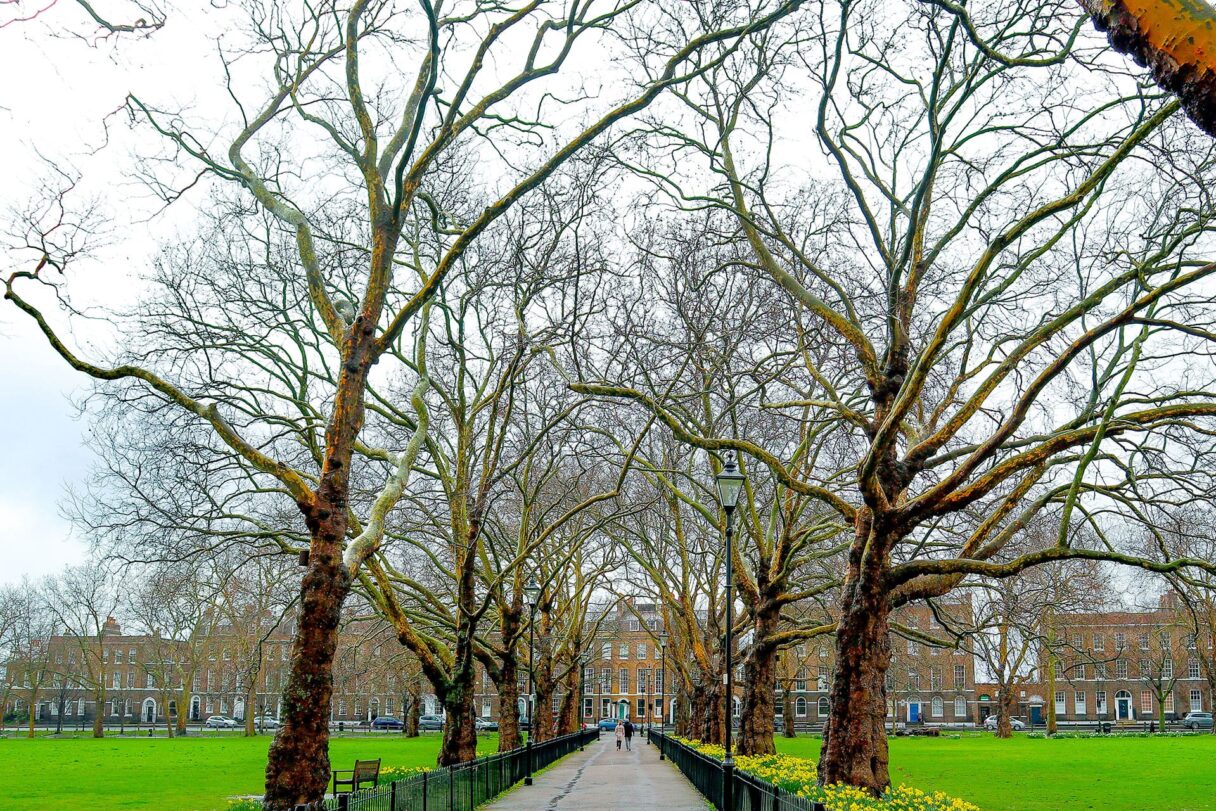
The dank Friday night weather saw those who assembled given candles before marching around the park. Amid the chanting and the kissing, the protesters, in a nod to the arrest of Eaks, lit each other’s cigarettes as a small posse of local residents and police watched on. “We wanted to go out on the streets to make a public presence,” recalled attendee, gay rights activist and historian, Jeffrey Weeks. “It was a very affirming experience because it was the first time, apart from those meetings at LSE, that most of us had ever openly declared our gayness.”
Fellow marcher Stuart Feather would later recollect the liberation of being able to express his sexuality in public for the first time. “It was dark… and we kissed openly, which was extraordinary. It was an enormous release to be able to kiss and carry on.”
At one point during the short march, the demands of the Gay Liberation Front were read out to cries of ‘Right On!’ from the marchers. These demands, included in the Front’s magazine Come Together, included:
- That all discrimination against gay people, male and female, by the law, by employers and by society at large, should end.
- That all people who feel attracted to a member of their own sex be taught that such feelings are perfectly normal.
- That sex education in schools stop being exclusively heterosexual.
- That the age of consent for gay people be reduced to the same as for straights.
- That gay people be free to hold hands and kiss in public, as are heterosexuals.
Gay IS cool. All power to oppressed people. Come out – Join Gay Liberation Front!
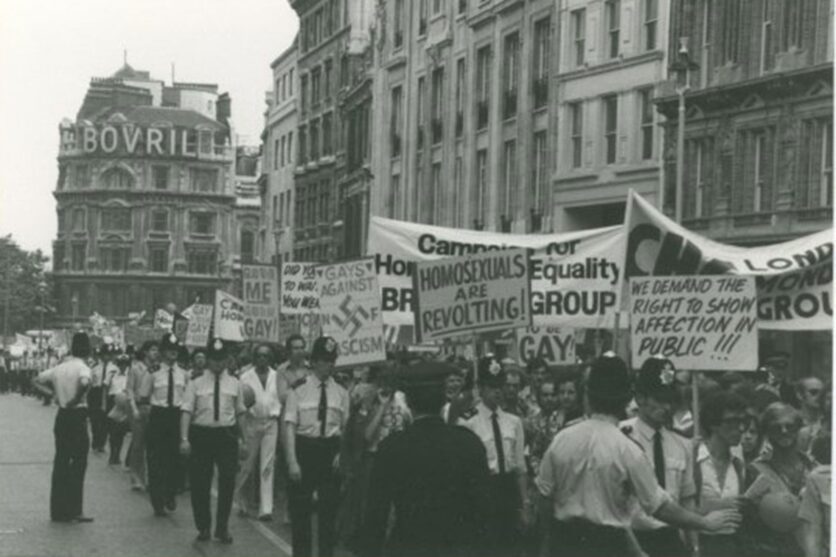
The Times reporter Geoffrey Wansell was at Highbury Fields that night. His report the next day read: ‘At the peaceful meeting members of the front criticised the public attitude to homosexuals. As one said, ‘We don’t want to be a freak show. We just want to be the same as everyone else.’ At the end of the 90 minute torchlight demonstration, members of the front emphasised that their membership included ordinary people. One said, ‘there are straight people, lesbians and male homosexuals in the front.’’
Weeks also said of events after the march, “We went to the pub across the road which was called The Cock. I always thought that was very apt. And then we dispersed and I got on the tube back home. And on the tube, there was an atmosphere of outness, people were hugging on the tube carriage and so on and that was a real first for me…”
Small, peaceful but entirely unique, the Highbury Fields march quickly snowballed into further events. The first openly gay ‘dance’ took place at LSE the same month and the first Gay Pride Rally took place in Trafalgar Square just two years later. The plaque on the site of the now-converted toilets in Highbury Fields was unveiled in the 1990s in a ceremony attended by Britain’s first openly gay MP Chris Smith and the local constituency MP, Jeremy Corbyn.
More than half a century on, the LGBTQ+ scene in London has evolved beyond recognition from that night of candles and cigarettes near the Victoria line. Yet, as Jeffrey Weeks’ memories show, the lack of public interest and relatively small number of attendees didn’t reflect the seismic impact that initial march had on those who were there. It was the spark that lit the flame that for Britain’s LGBTQ+ community to join the global Pride movement and change the attitudes of Britons of all orientations towards sexual equality and freedom forever.
“The fact that we were watched only by a handful of people and by a journalist from The Times didn’t matter. Because we were making our presence felt."
Pride in London takes place on 29 June 2024, visit pridelondon.org
Read more: Amy Winehouse, St Lucia and the third album that never was

